From September 5 to 8, 2025, Professor Lü Pinchang, Chief Expert of the National Social Science Fund’s major project“Research on the Internationalization Strategy of Chinese Ceramic Art”, led his research team to conduct an in-depth field study in Stoke-on-Trent, the historic heart of Britain’s ceramic industry. The visit included comprehensive investigations into the current state of ceramic art in Stoke, with site visits to Middleport Pottery, the Potteries Museum & Art Gallery, the Spode Museum, the Wedgwood Museum, and the British Ceramics Biennial (BCB). Over four days of on-site research and academic exchange, the team distilled insights into Stoke’s transformation from the Industrial Revolution to contemporary artistic innovation, offering new perspectives for advancing the internationalization strategy of Chinese ceramic art.
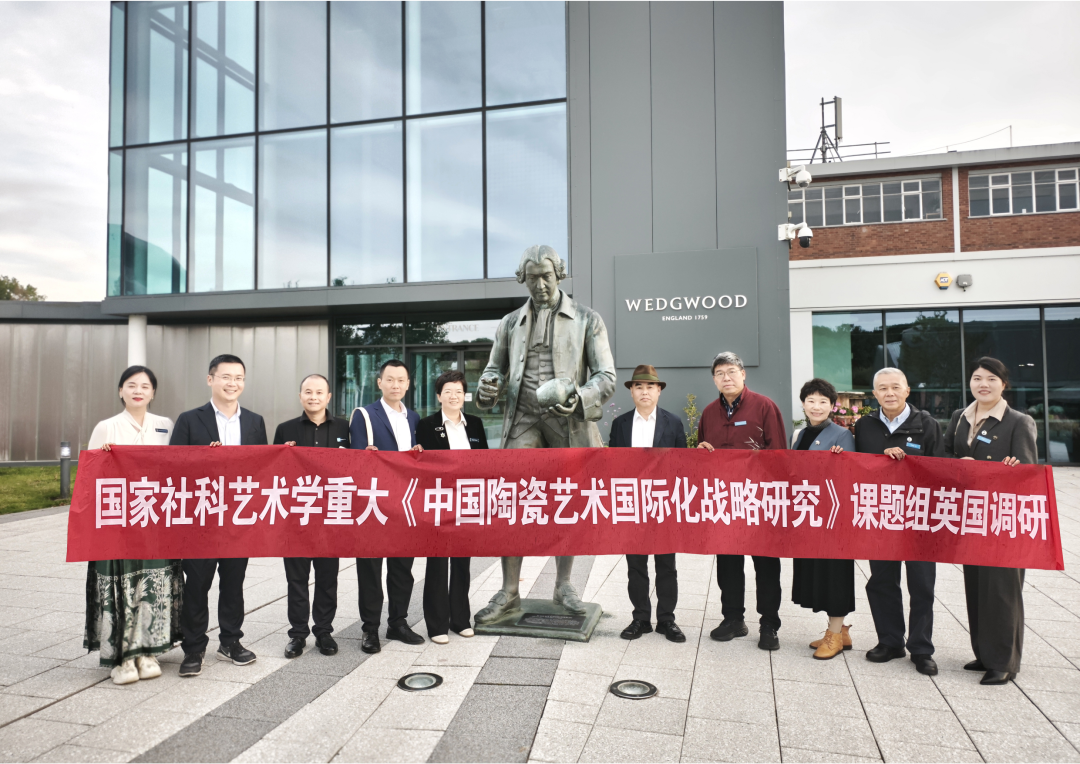
The historical ties between Jingdezhen, China, and Stoke-on-Trent, UK, trace back to the 13th century. During the Yuan Dynasty, blue-and-white porcelain reached Europe via the Maritime Silk Road. The pure white glaze of“Blanc-de-Chine”and the cobalt-blue motifs sparked a wave of“Chinoiserie”across Europe in the 17th century. Stoke, as Britain’s core ceramic hub during the Industrial Revolution, absorbed strong influences from Chinese porcelain, particularly in design motifs and production techniques. The iconic“Willow Pattern”plates exemplify this cross-cultural exchange: drawing inspiration from Jingdezhen blue-and-white porcelain motifs such as willows, pavilions, and towers, while incorporating British pastoral themes. Through transfer printing technology, these designs were mass-produced, elevating the production and popularity of the Willow Pattern to new heights.
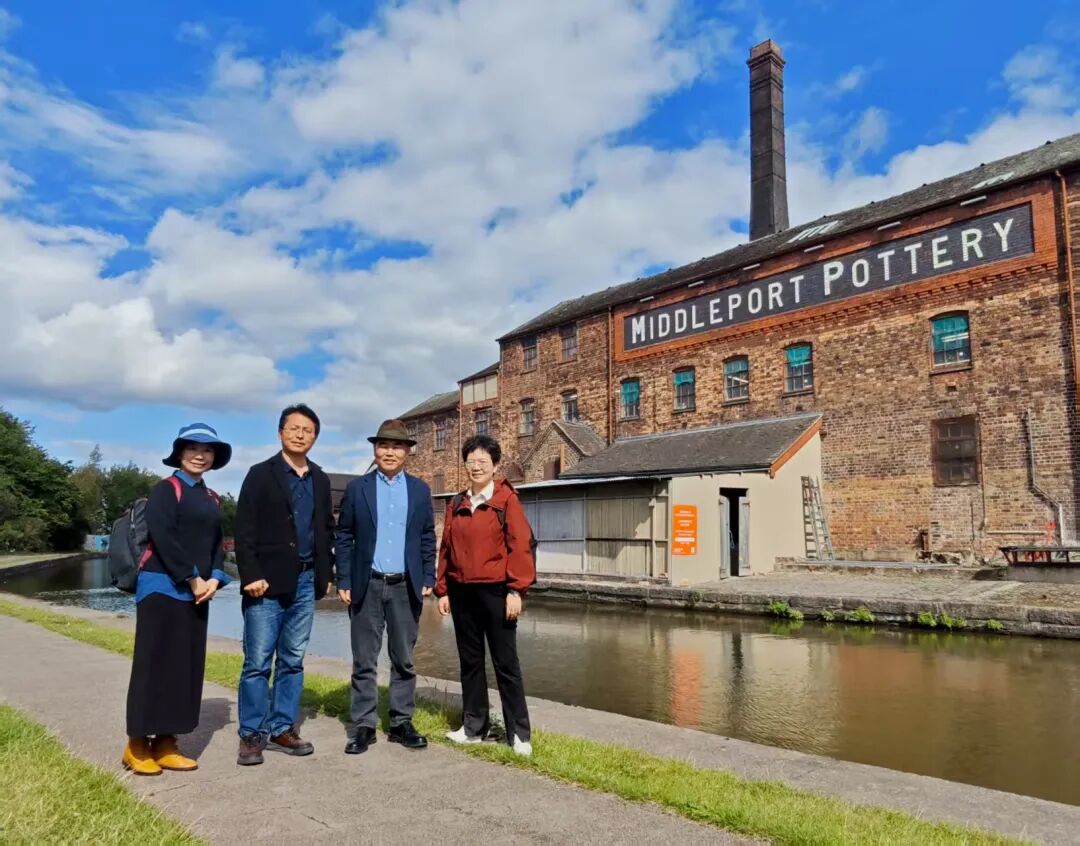
Research team members conducting a field study at Middleport Pottery
At Middleport Pottery, the historic bottle kilns vividly reflect the early days of Britain’s Industrial Revolution. By closely observing each stage of production, from clay processing and mold casting to trimming, transfer printing, and kiln firing, the research team witnessed the artisanal dedication of local craftsmen. Notably, large-scale production of willow-pattern tableware continues to highlight the enduring legacy of this design.
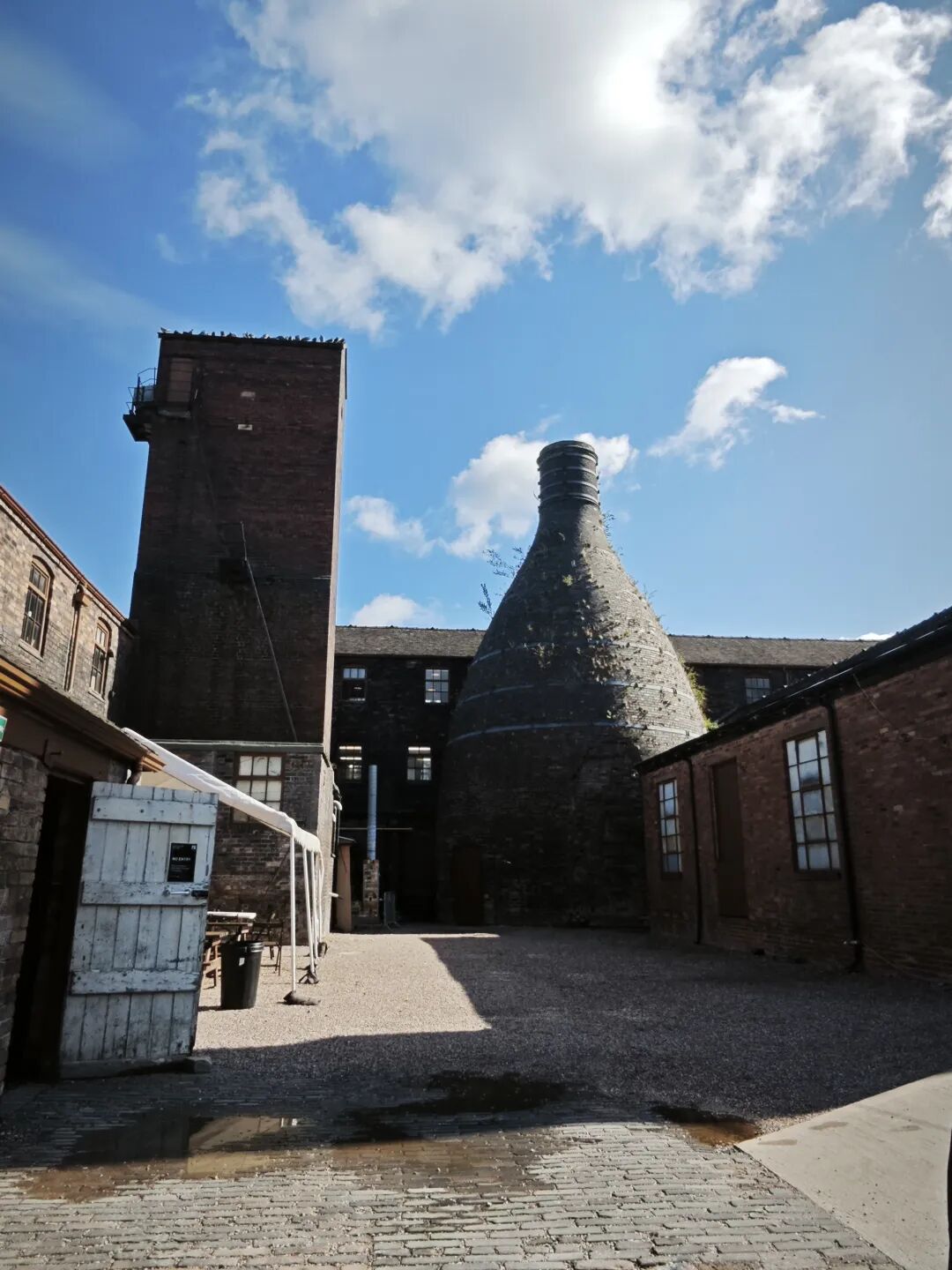
Research team members visiting the historic bottle kilns at Middleport Pottery, UK
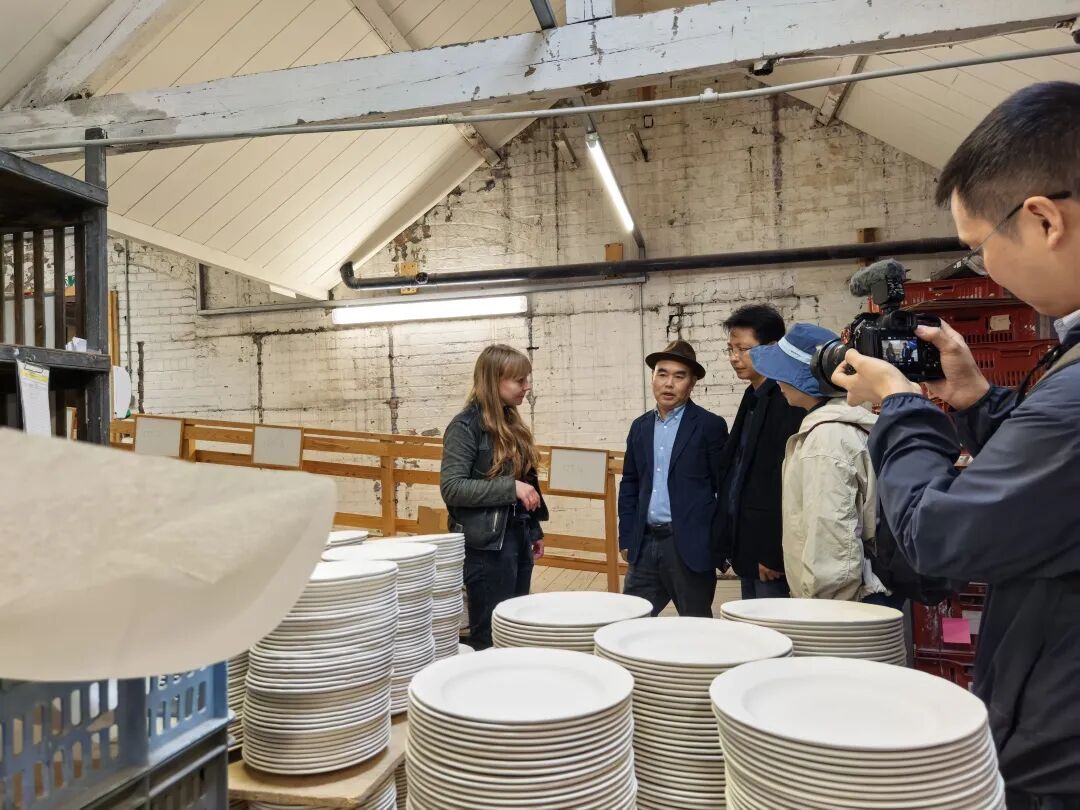
Research team members examining the production workshops at Middleport Pottery
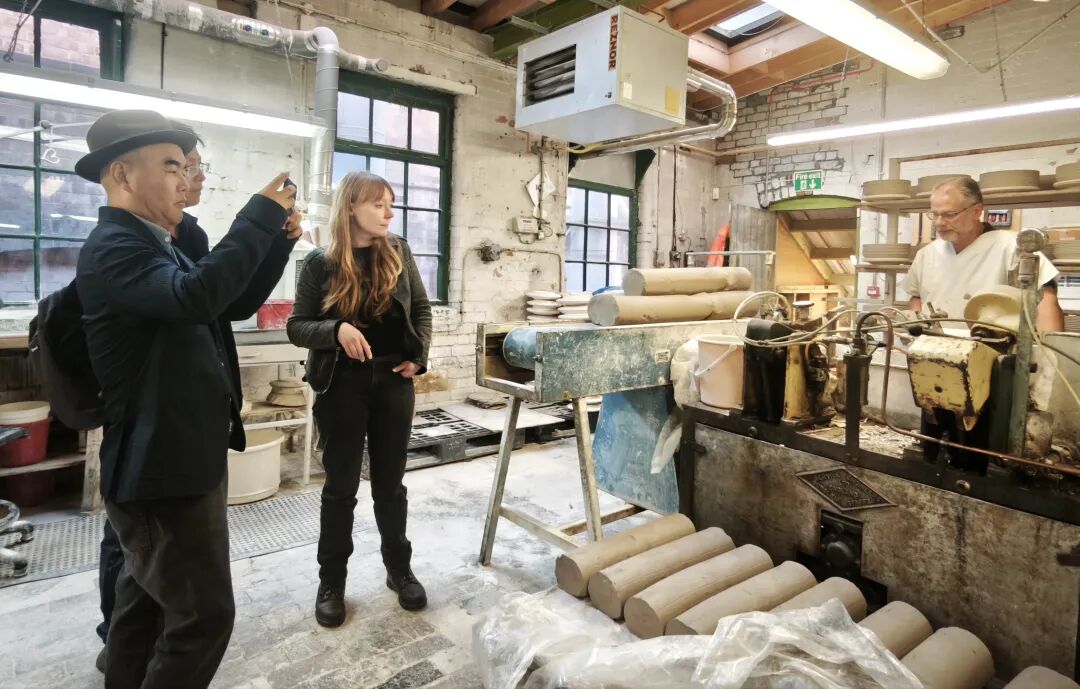
Research team members examining the production workshops at Middleport Pottery
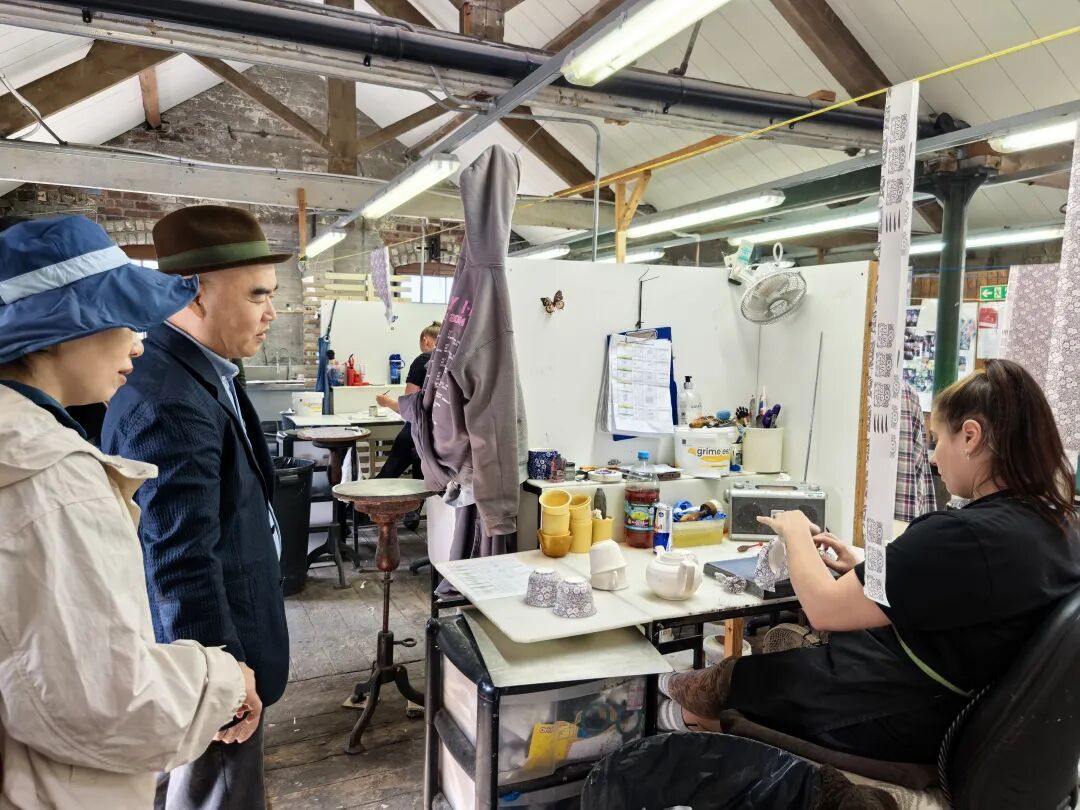
Research team members engaging in in-depth exchange with British transfer-printing craftsmen
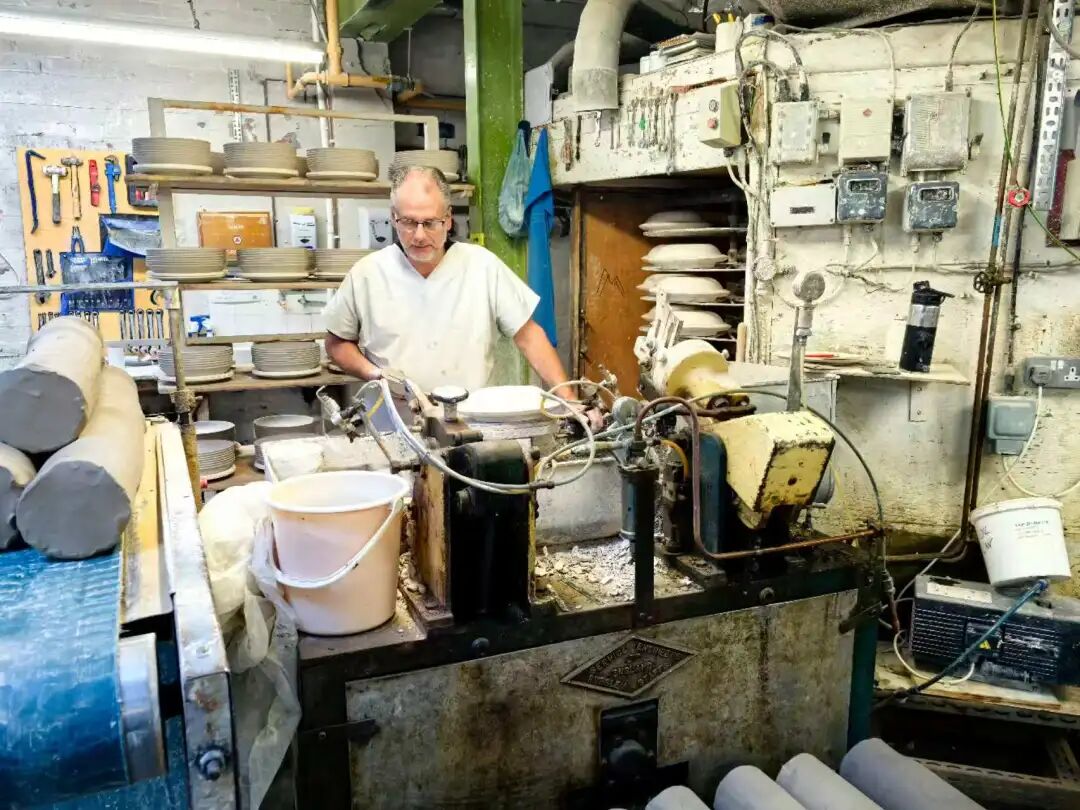
Research team members studying clay body pressing techniques at Middleport Pottery
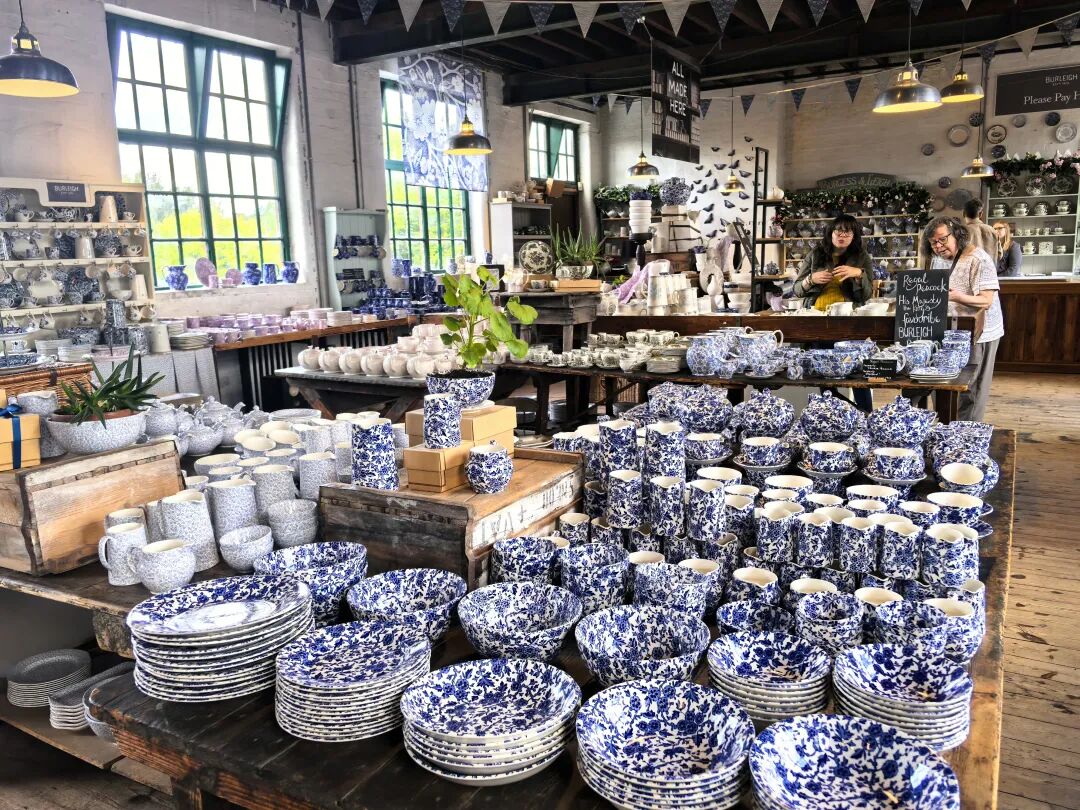
Research team members visiting the sales shop of Middleport Pottery
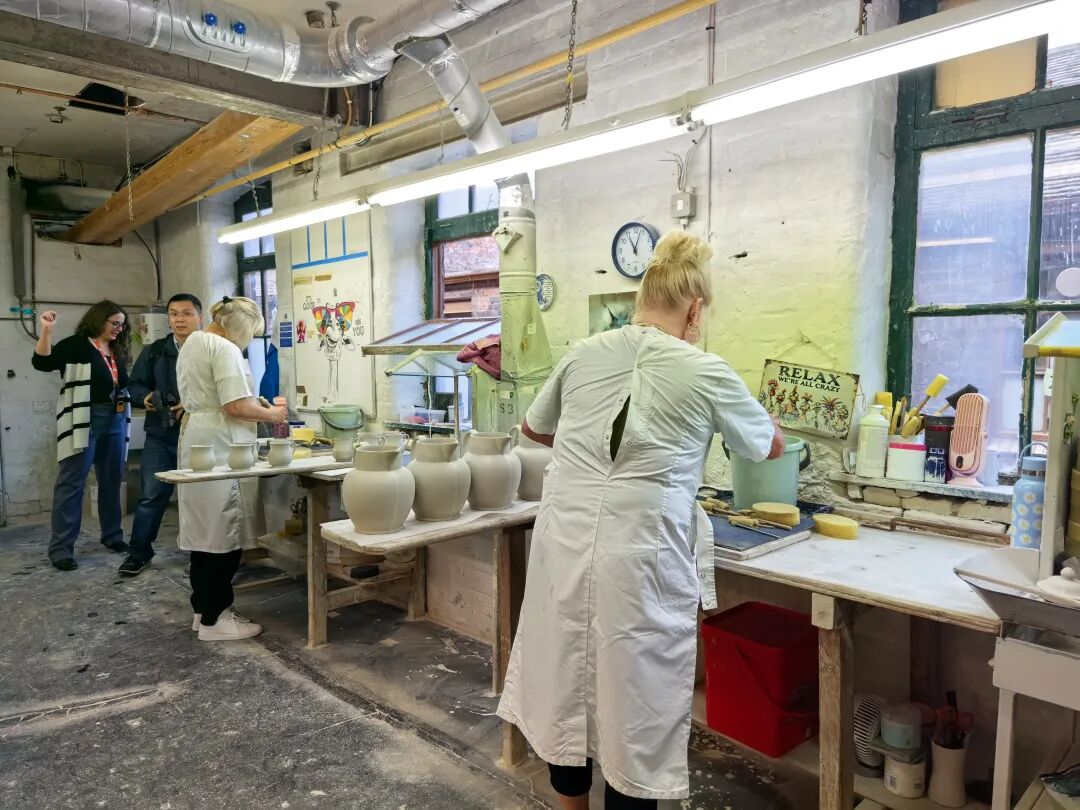
Research team members observing trimming and rehydration techniques at Middleport Pottery
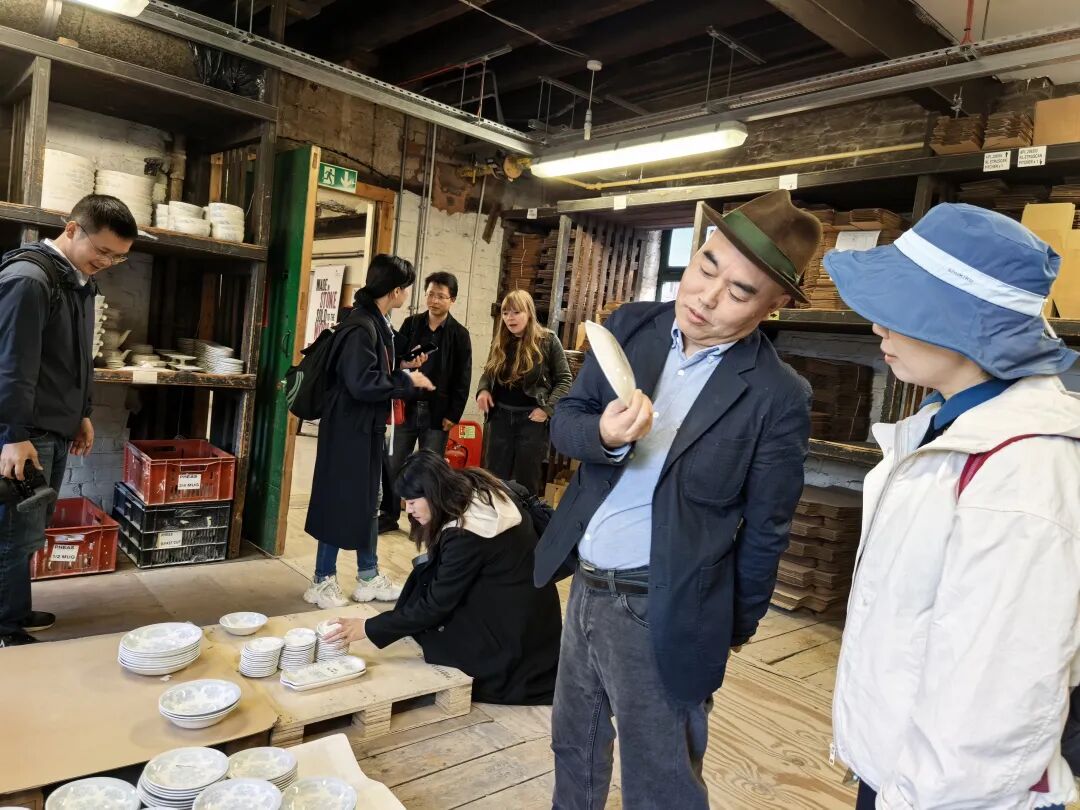
Research team members conducting a field study at Middleport Pottery
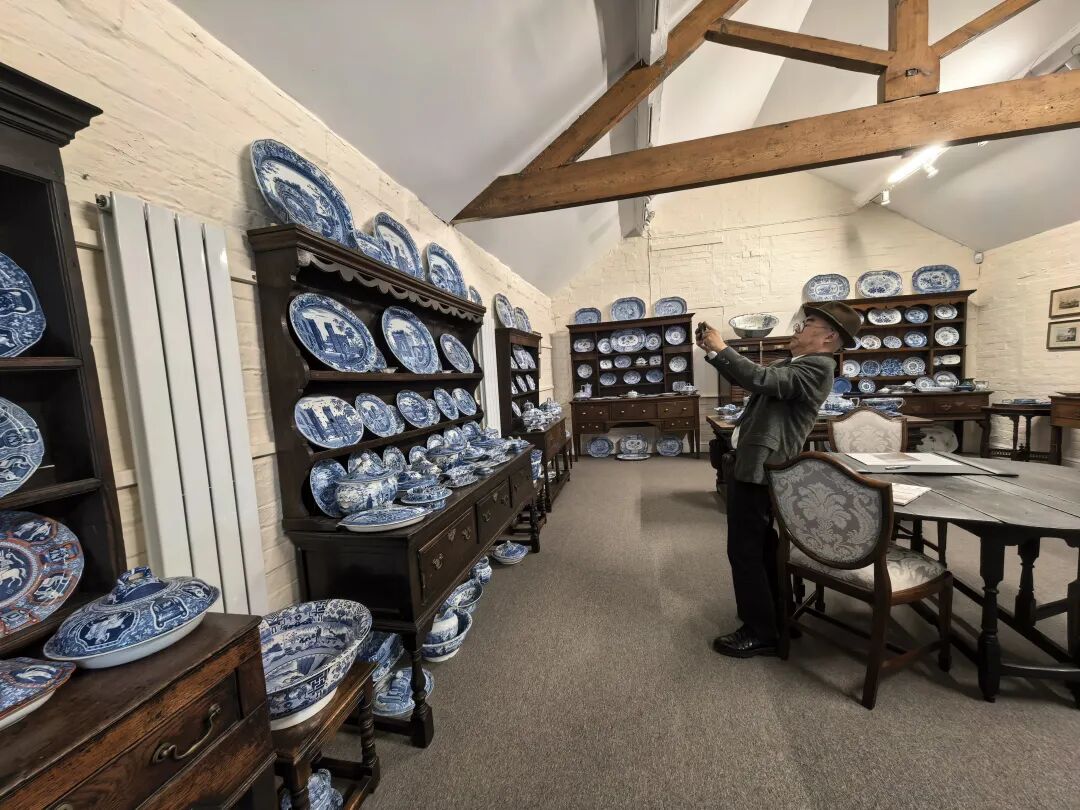
Research team members examining exhibition halls of the Spode Museum
The Spode Museum houses an extensive collection of willow-pattern blue-and-white plates, offering tangible evidence of the“Chinoiserie”that swept Britain in the late 18th century. The preserved daily-use ceramics and coffee sets featuring willow motifs at both the Spode Museum and Middleport Pottery stand as enduring testimony to the centuries-long history of Sino-British ceramic art exchange.
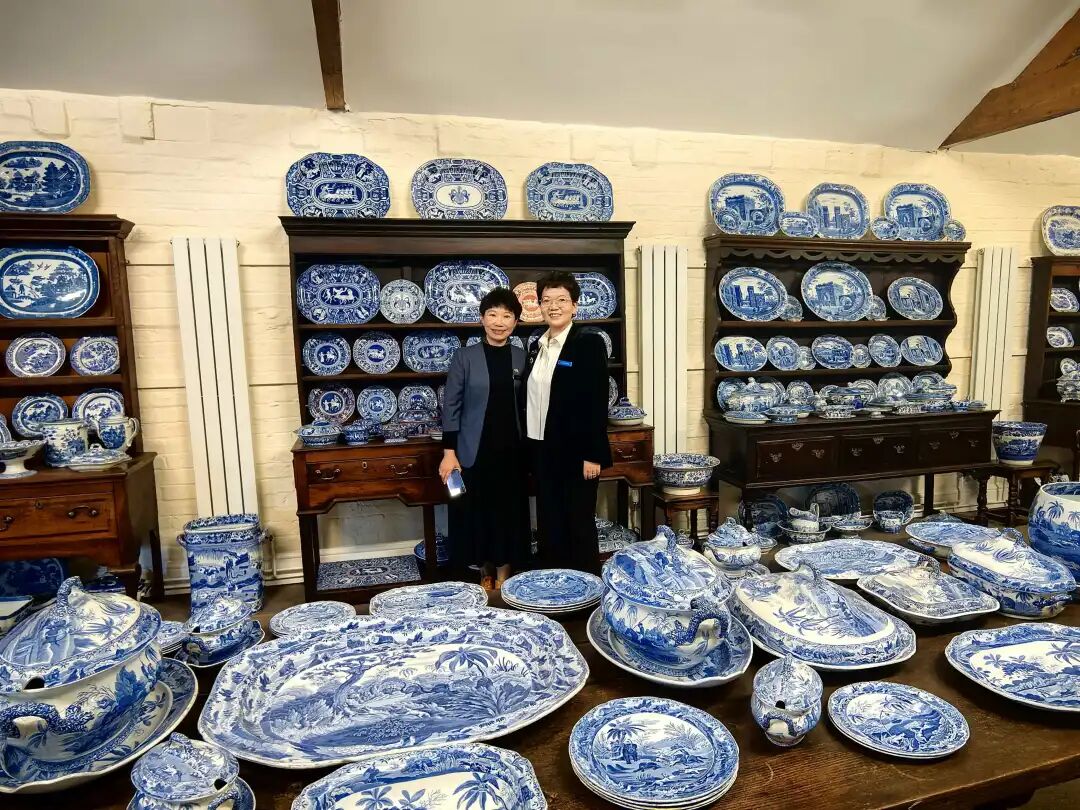
Research team members investigating storage collections at the Spode Museum
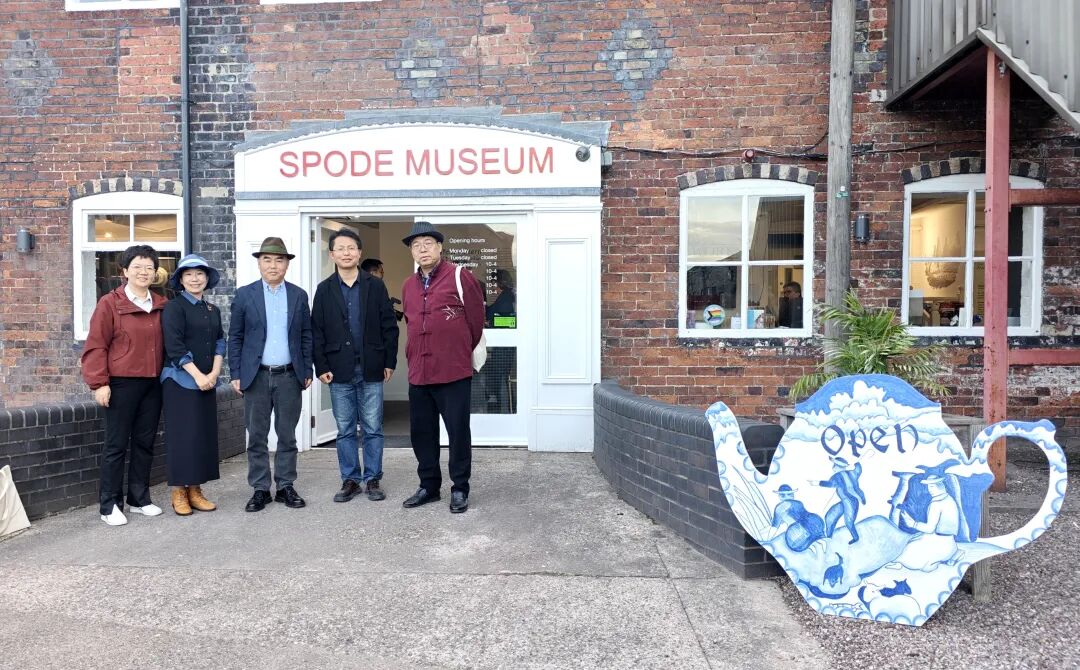
Research team members visiting the Spode Museum
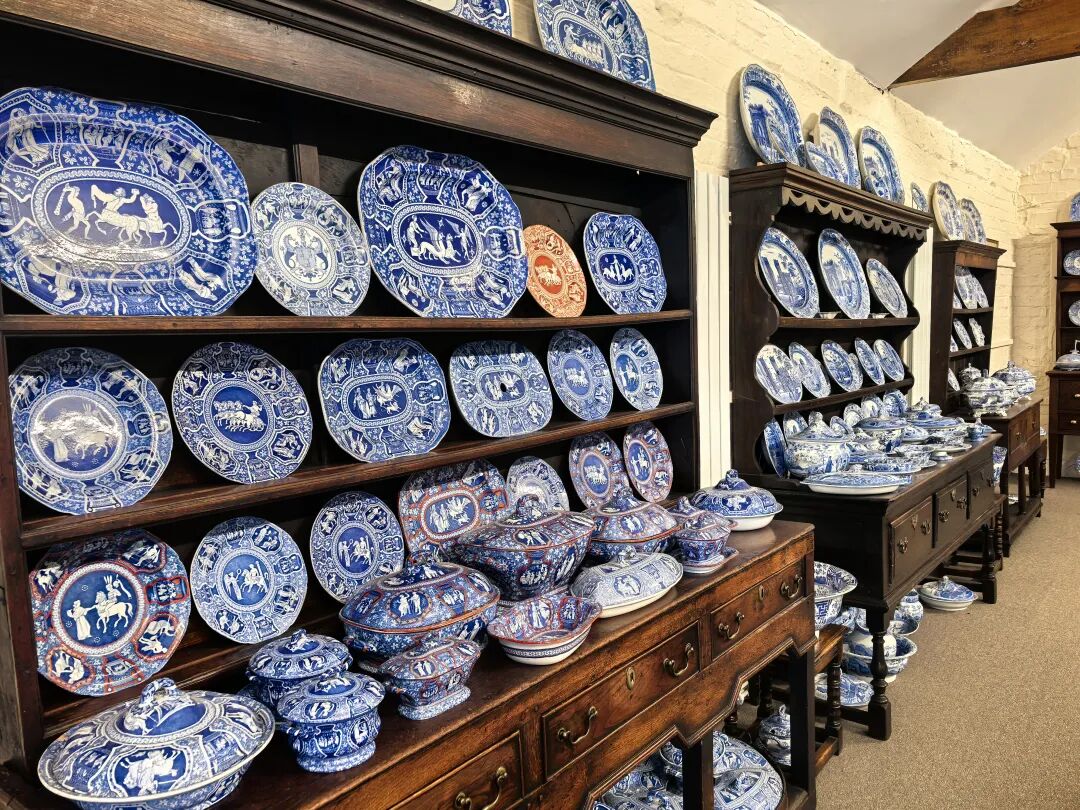
Large collection of willow-pattern tableware preserved in the storage of the Spode Museum
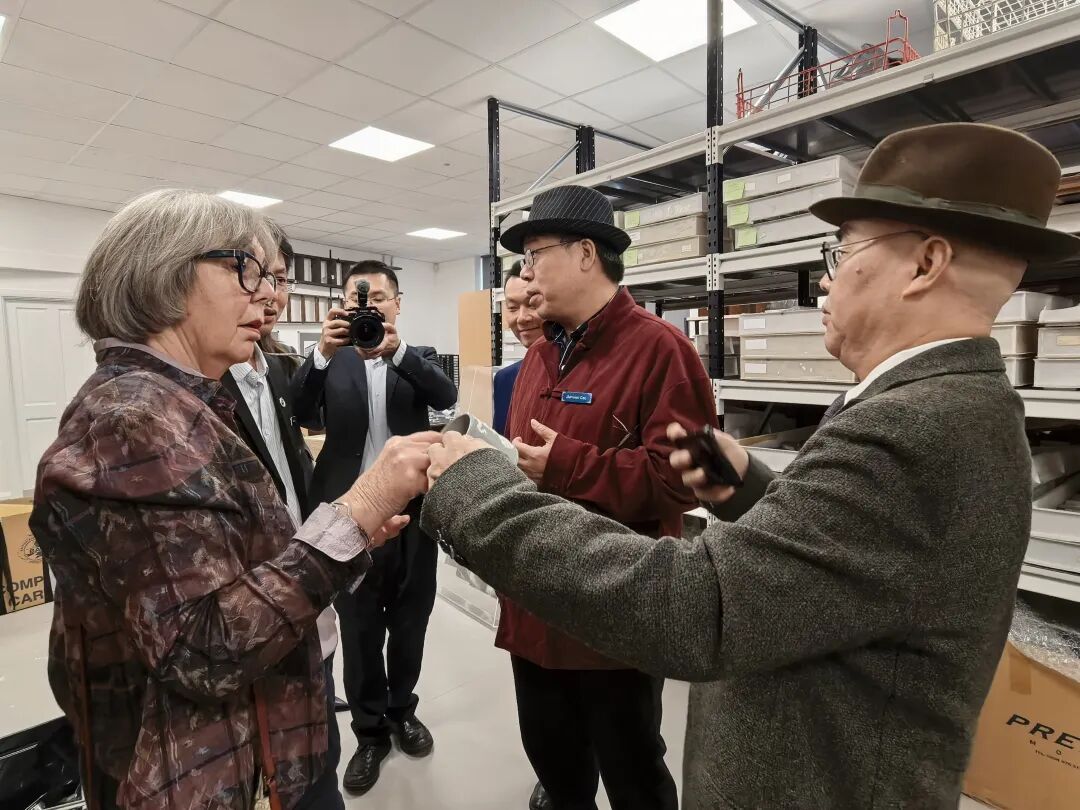
Research team members engaging in discussions with Spode Museum staff in the storage room
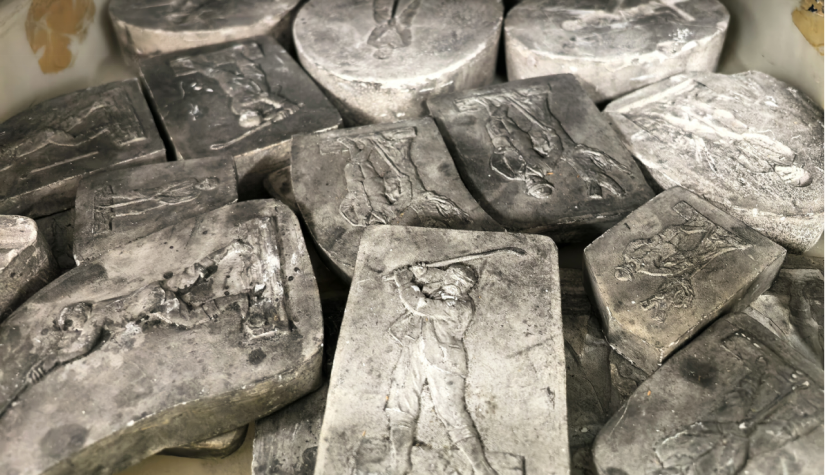
Ancient ceramic molds preserved in the Spode Museum storage
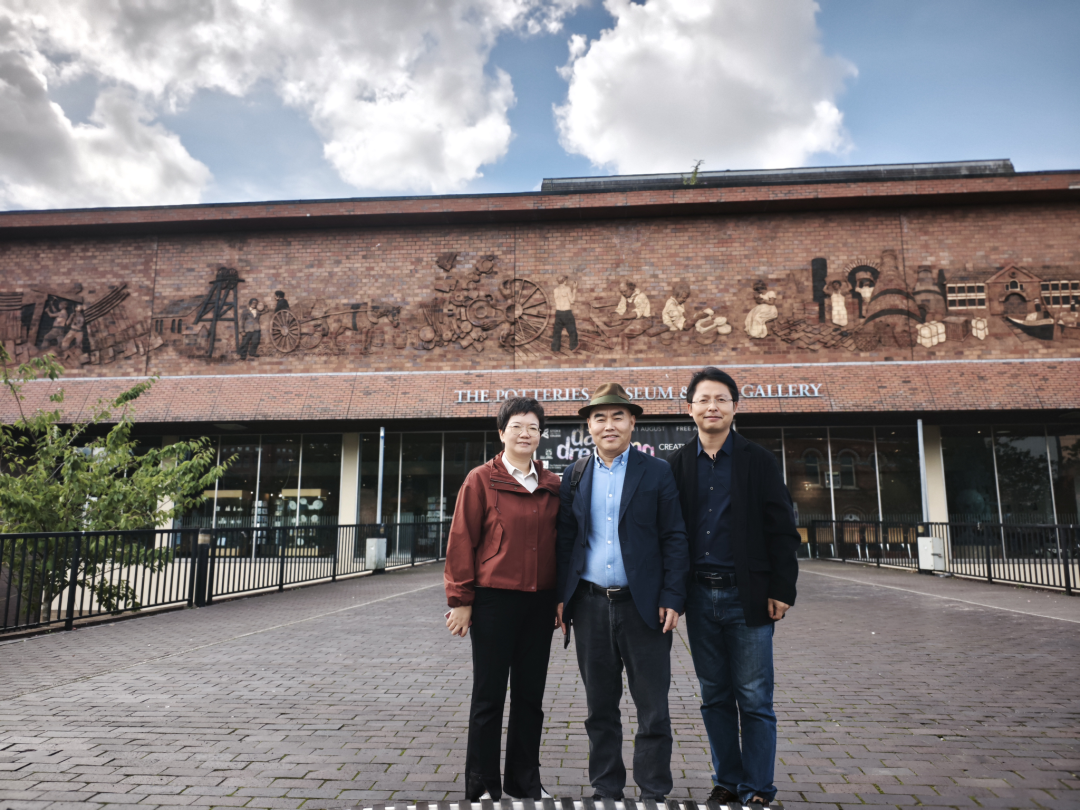
Research team members visiting the Potteries Museum & Art Gallery in Stoke-on-Trent
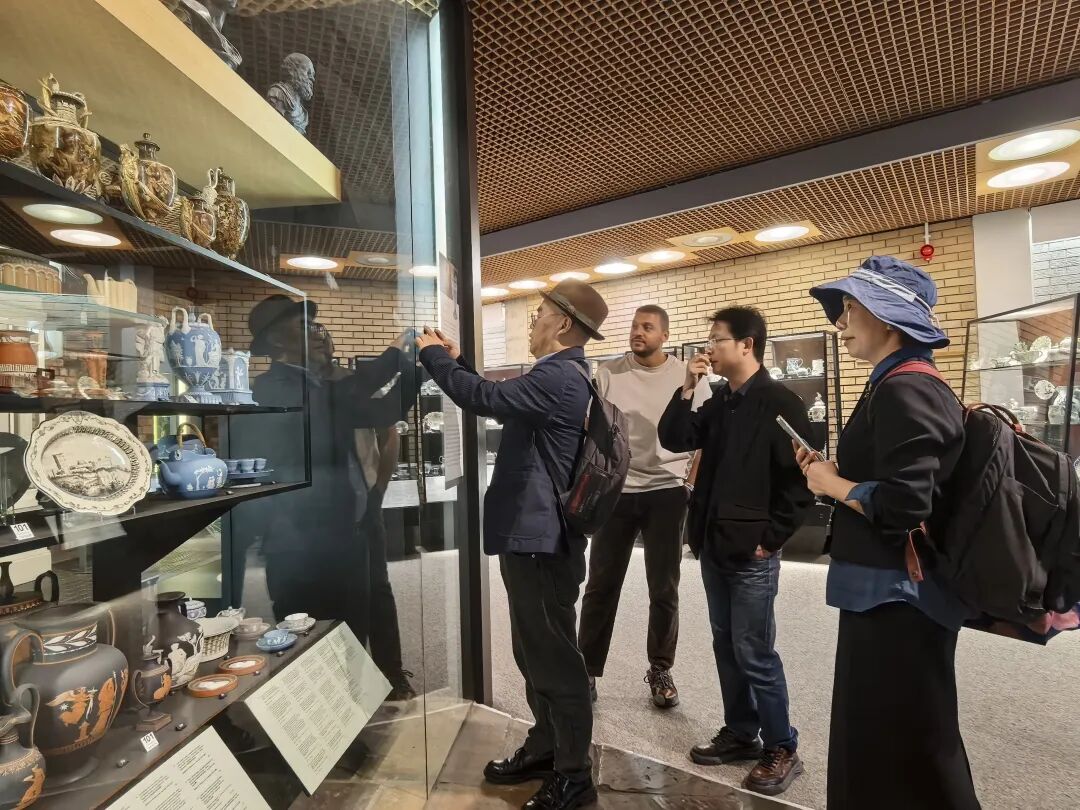
Research team members conducting field research at the Potteries Museum & Art Gallery
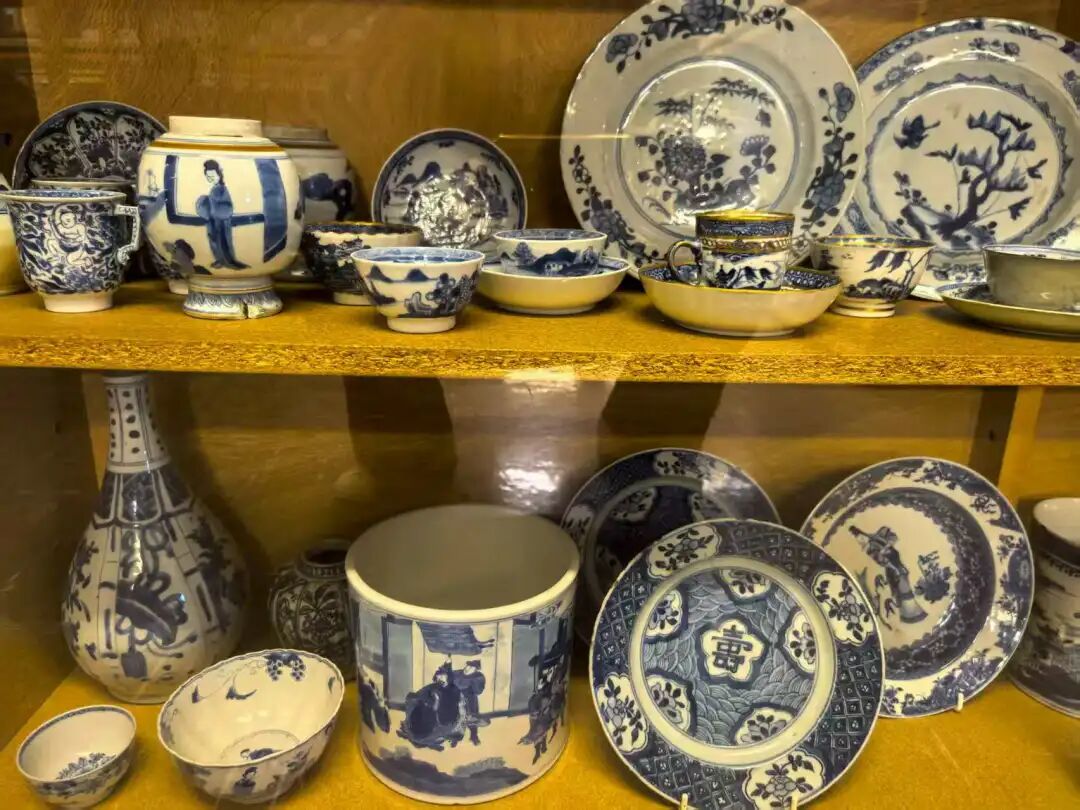
Extensive collection of Chinese blue-and-white porcelain preserved in the Potteries Museum
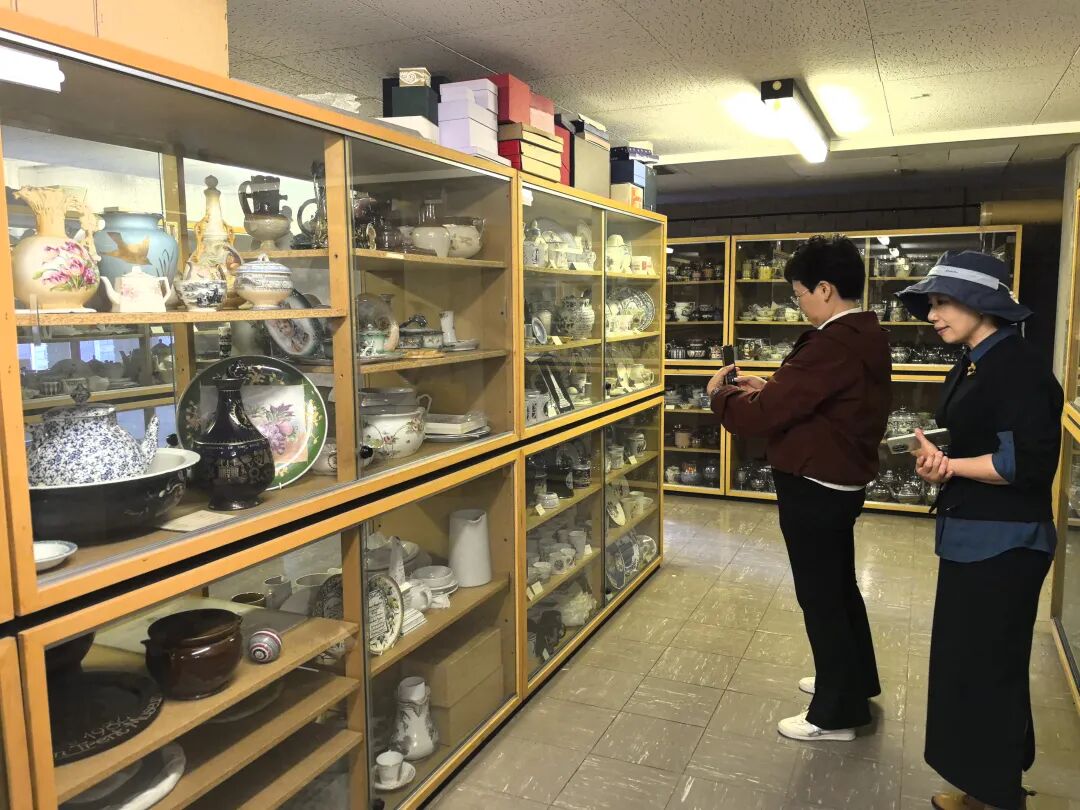
Research team members examining the storage collections of the Potteries Museum
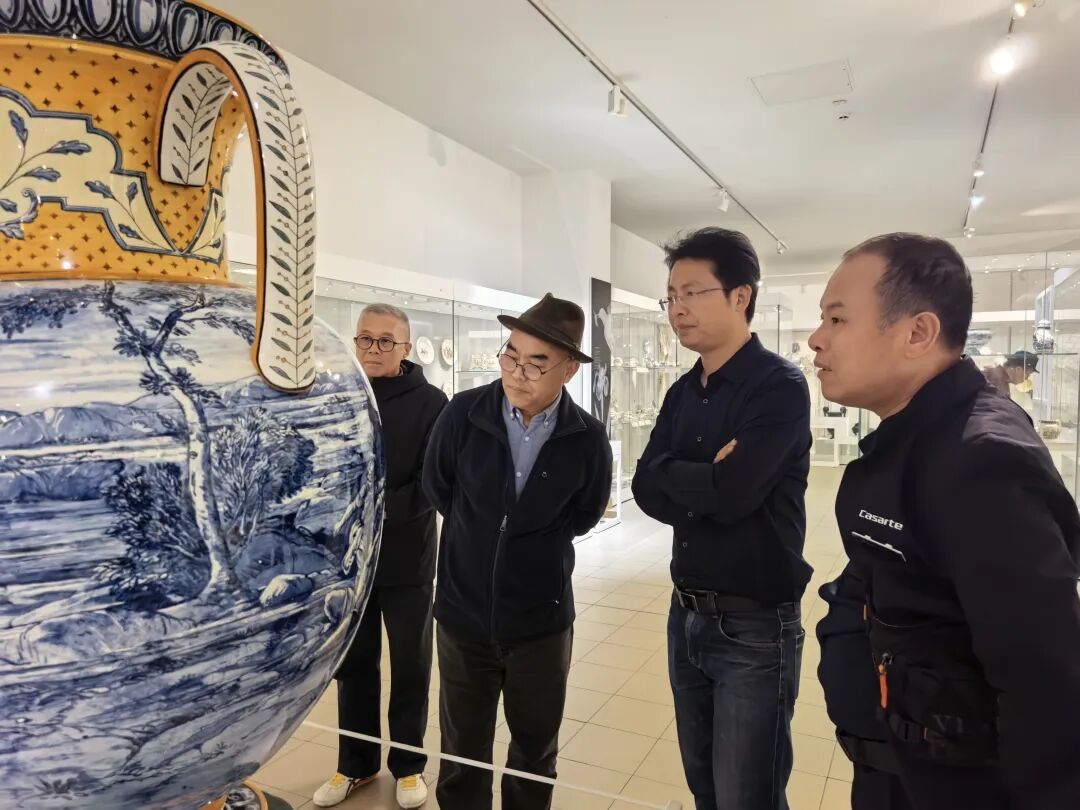
Research team members visiting the Wedgwood Museum
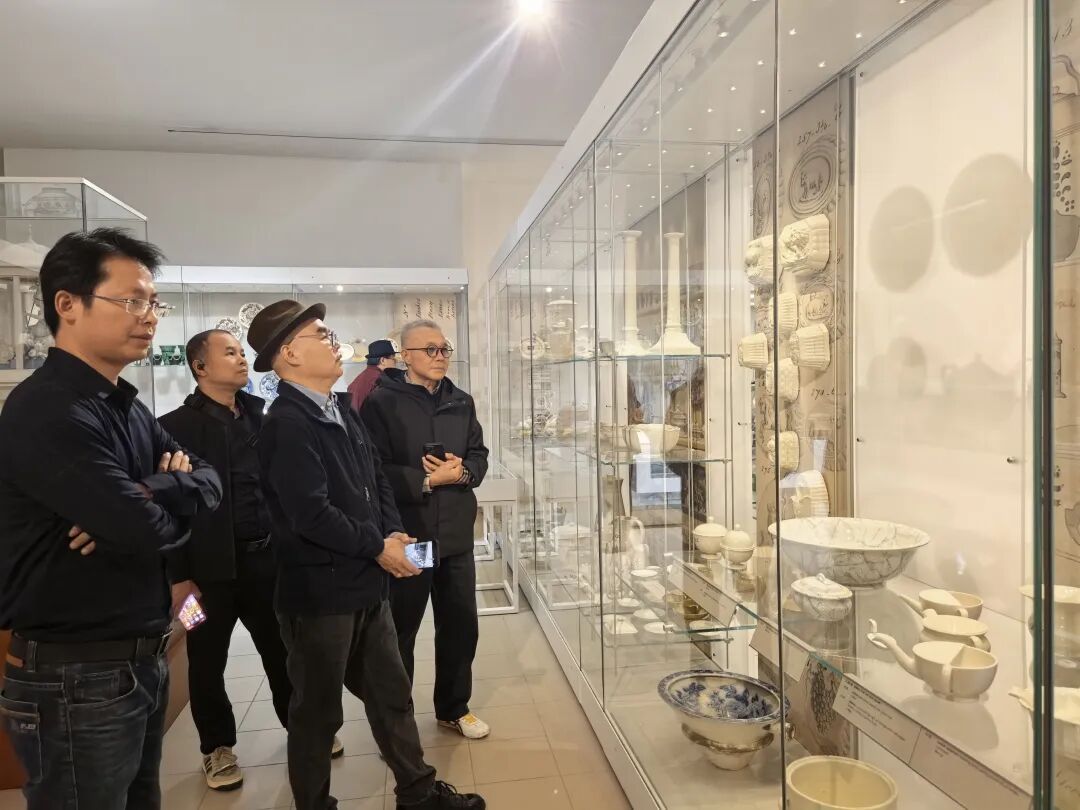
Research team members visiting the Wedgwood Museum
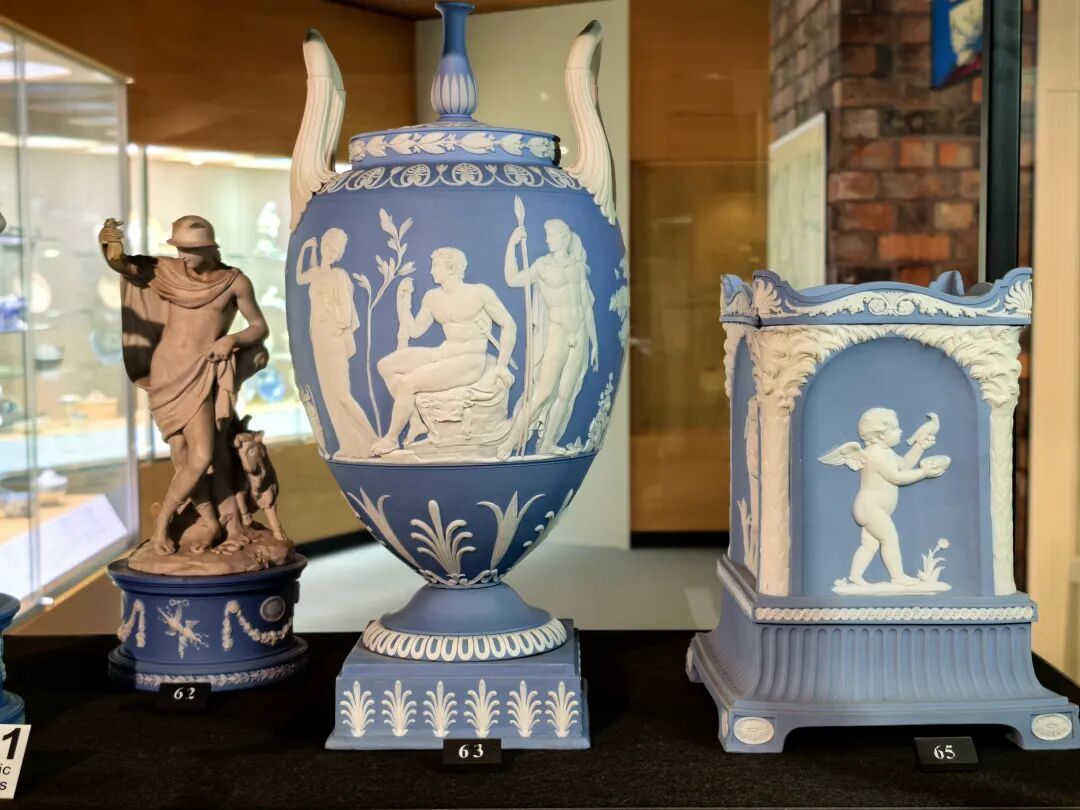
Large collections of Wedgwood ceramics on display at the Wedgwood Museum
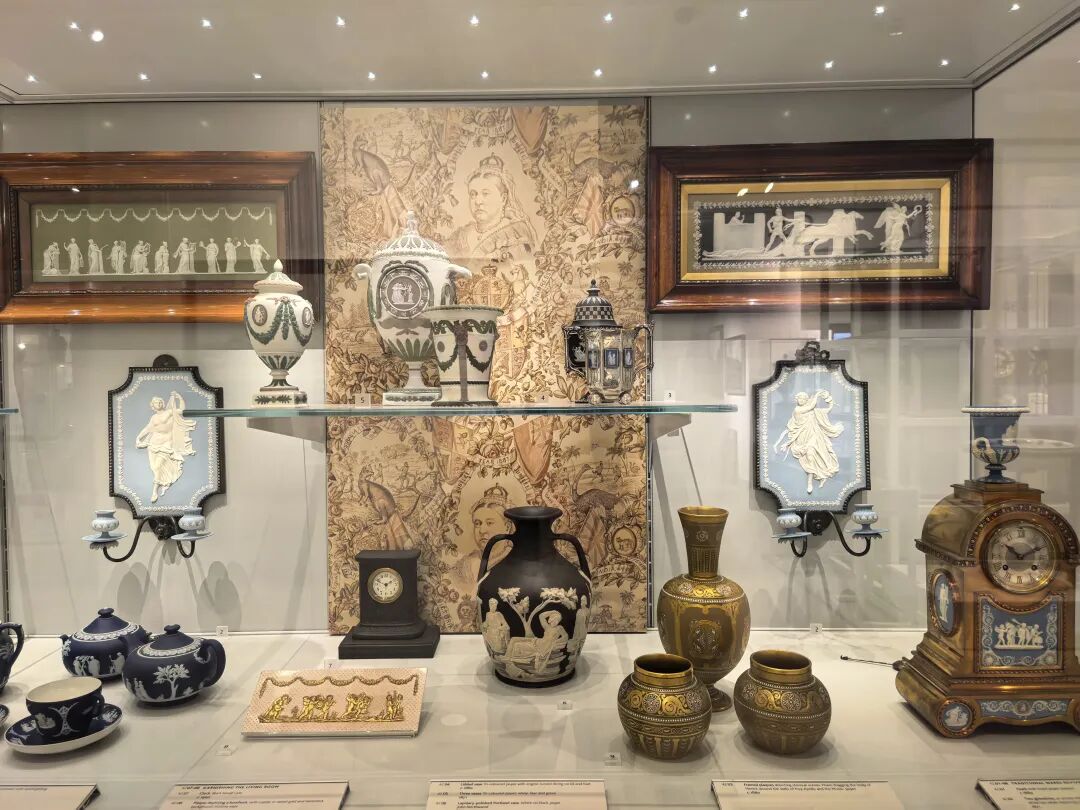
Wedgwood Museum showcasing iconic Wedgwood ceramics
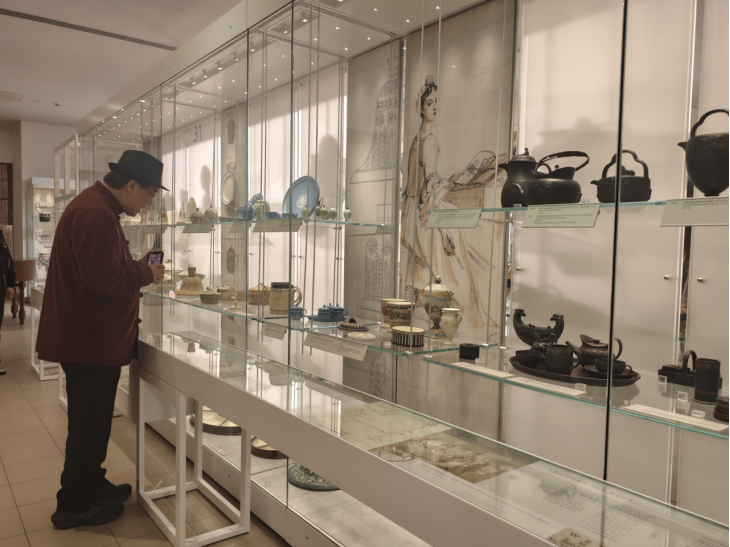
Professor Cao Jianwen conducting research at the Wedgwood Museum
A key focus of this fieldwork was the Wedgwood Factory and Museum, where the team explored the brand’s journey to global renown and its internationalization strategies. Wedgwood successfully transformed ceramics from utilitarian wares into artistic symbols of Neoclassicism, securing its world-class status through royal patronage, international exhibitions, and precise market positioning. Its integrated model of“design-driven branding,”“value creation through storytelling,”and“standardized craftsmanship”offers important insights for Chinese ceramic art: how to overcome cultural discounting and achieve international advancement by building brand narratives and market systems with global resonance while safeguarding the essence of local aesthetics.
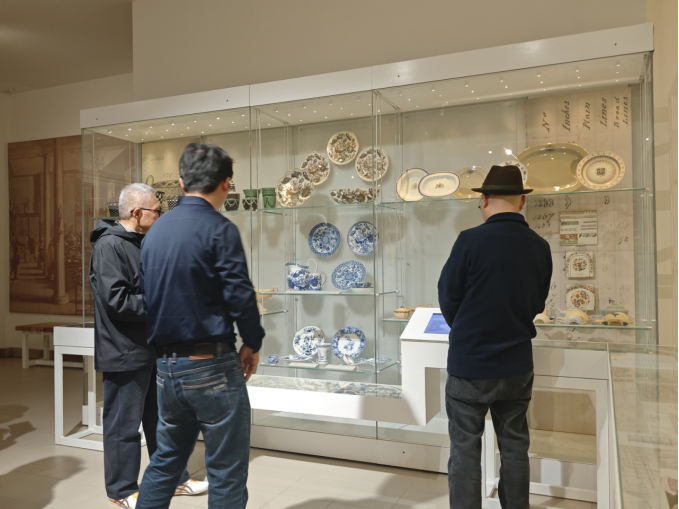
Research team members visiting the Wedgwood Museum
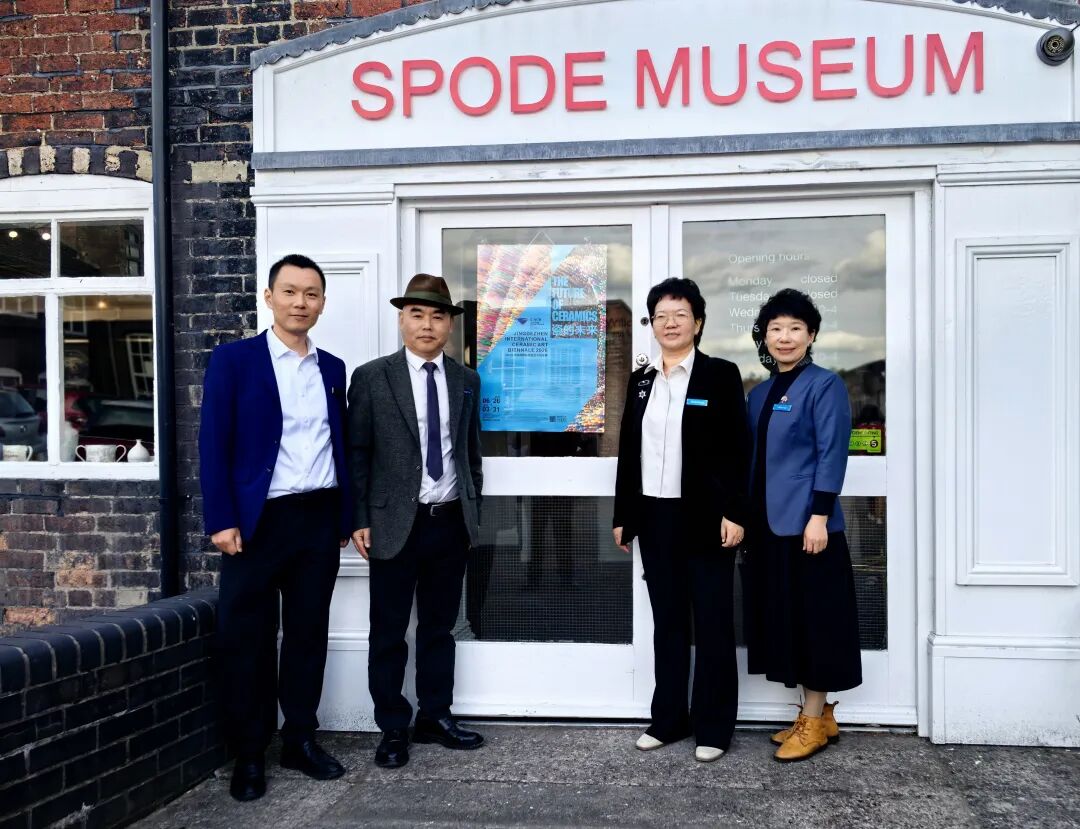
Research team members promoting the“Future of Porcelain”International Ceramic Art Biennale at the Spode Museum
The British Ceramics Biennial, launched in 2009, has grown into one of the UK’s leading contemporary ceramics exhibitions and a landmark event for the industry. Held every two years, it provides a platform for artists, enthusiasts, and professionals to celebrate and advance contemporary ceramic art while exploring new ideas and trends in clay practice. The 2025 edition coincided with the research team’s visit, during which Professor Lü Pinchang, chief expert of the major national project, held an in-depth discussion with Biennial Curator Claire Wood on how ceramic art can engage in dialogue with the world.
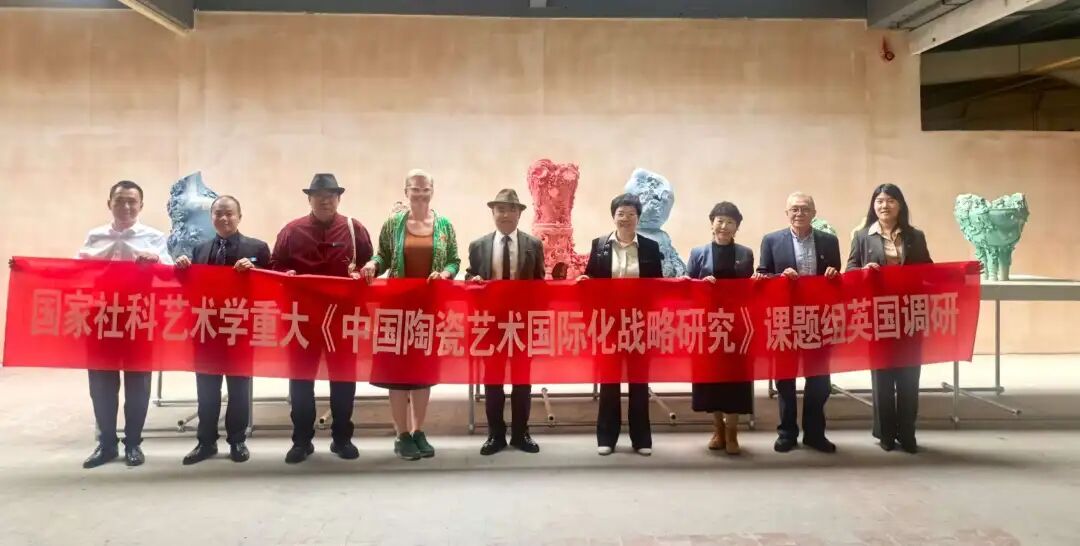
Research team members holding discussions and taking a group photo with Claire Wood, Curator of the British Ceramics Biennial
As the heartland of Britain’s ceramic industry, Stoke provides a rich industrial heritage that provides the biennial with rich cultural depth and historical context. The event not only showcases outstanding works by established artists but also seeks to discover and promote emerging ceramic talents through innovative exhibitions and international exchanges.
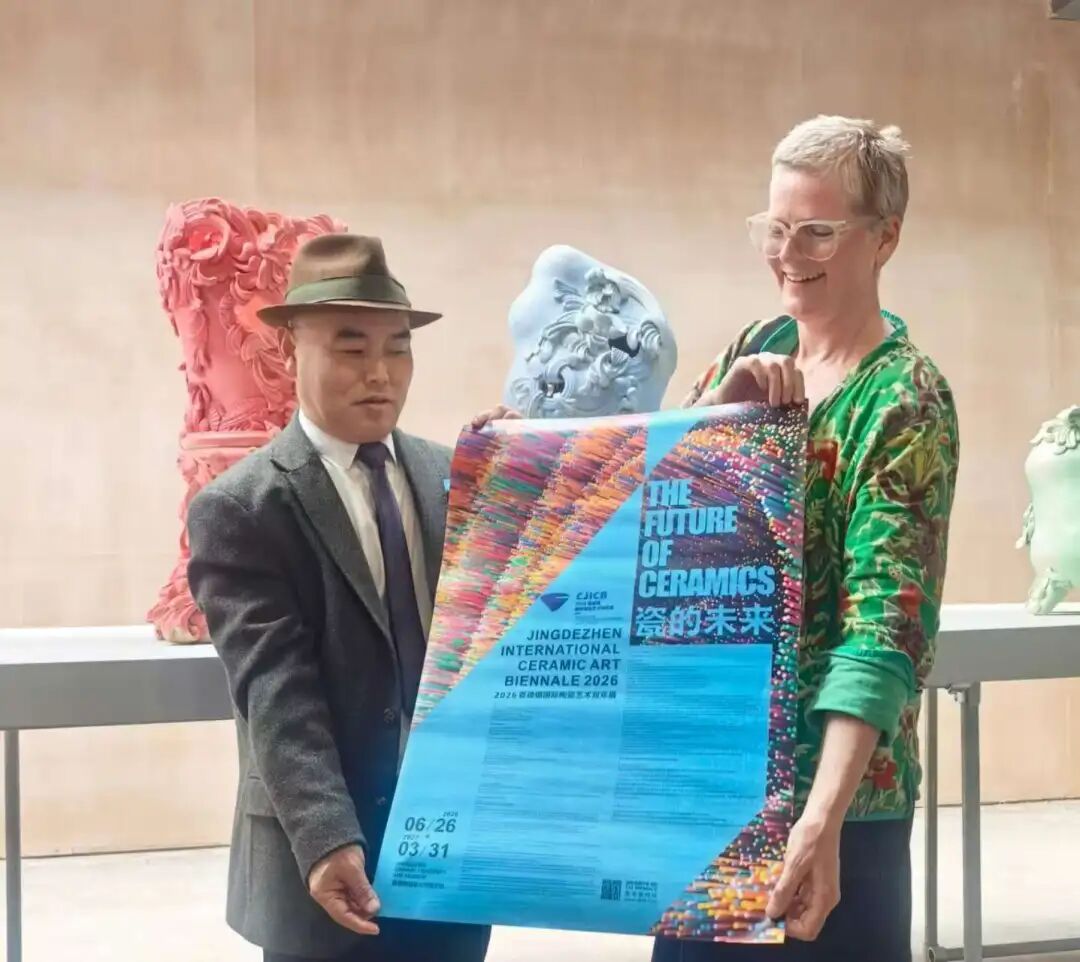
Research team members introducing the Jingdezhen International Ceramic Art Biennale to Claire Wood, Curator of the British Ceramics Biennial
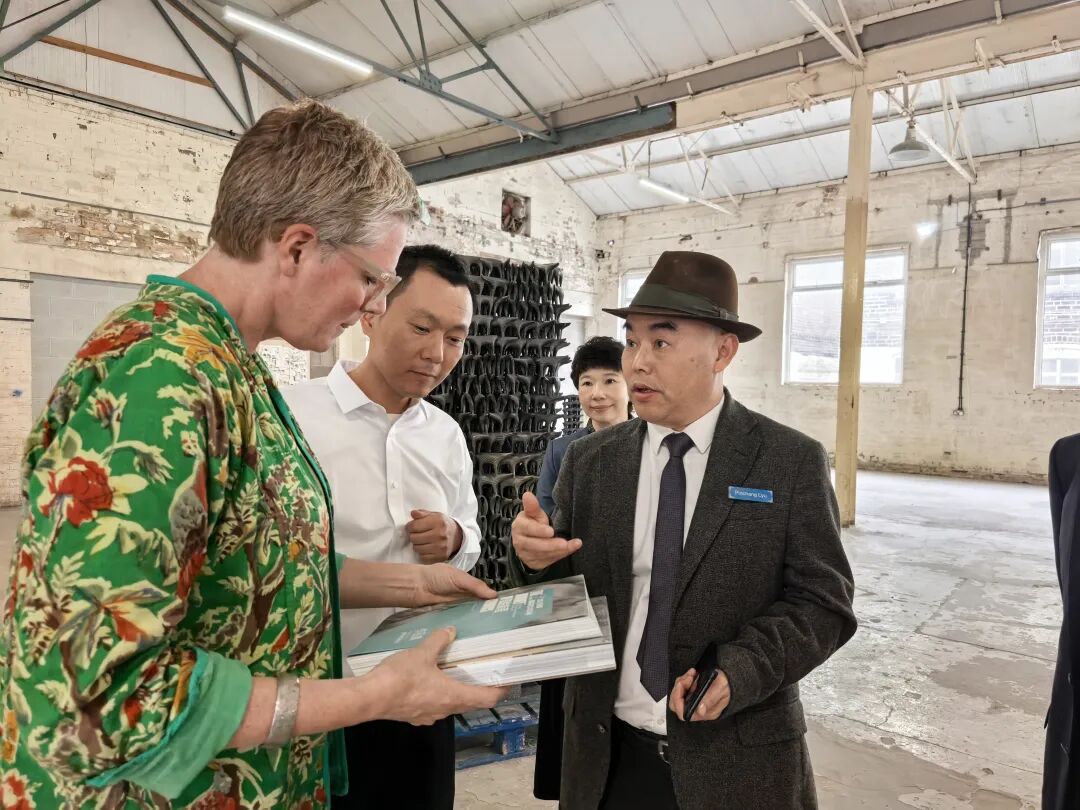
Research team members engaging in in-depth exchange with Claire Wood, Curator of the British Ceramics Biennial
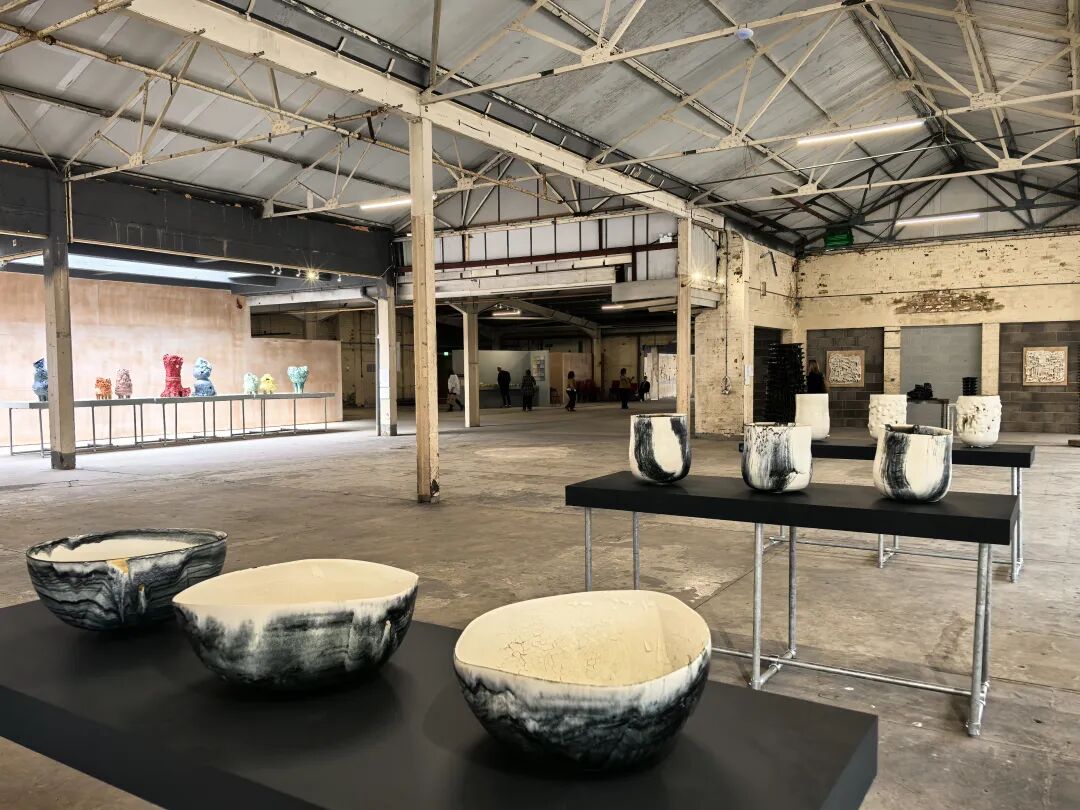
On-site view of the 2025 British Ceramics Biennial
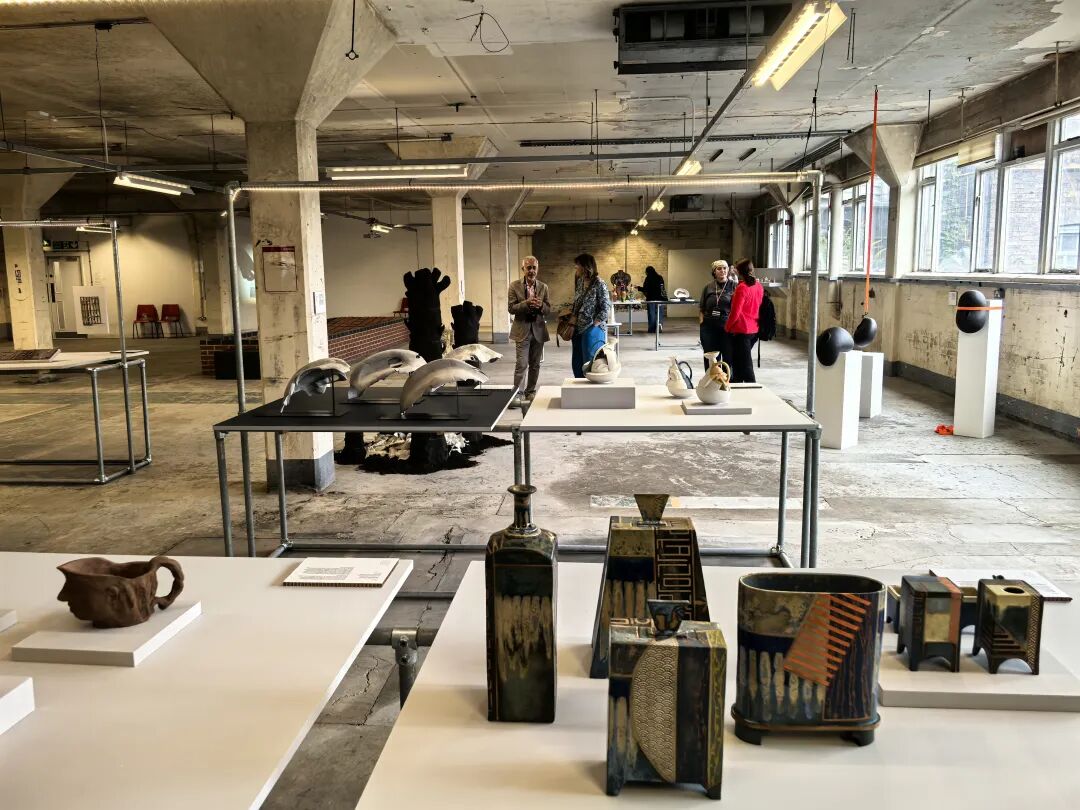
On-site view of the 2025 British Ceramics Biennial
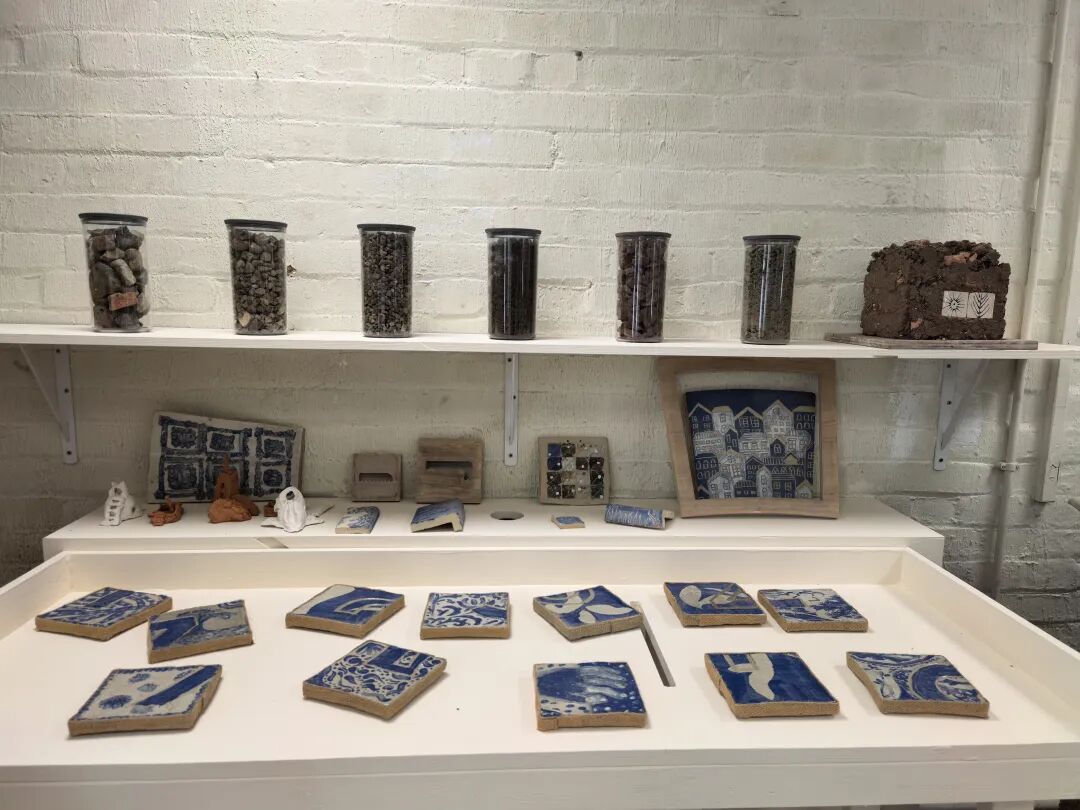
Artworks displayed at the 2025 British Ceramics Biennial
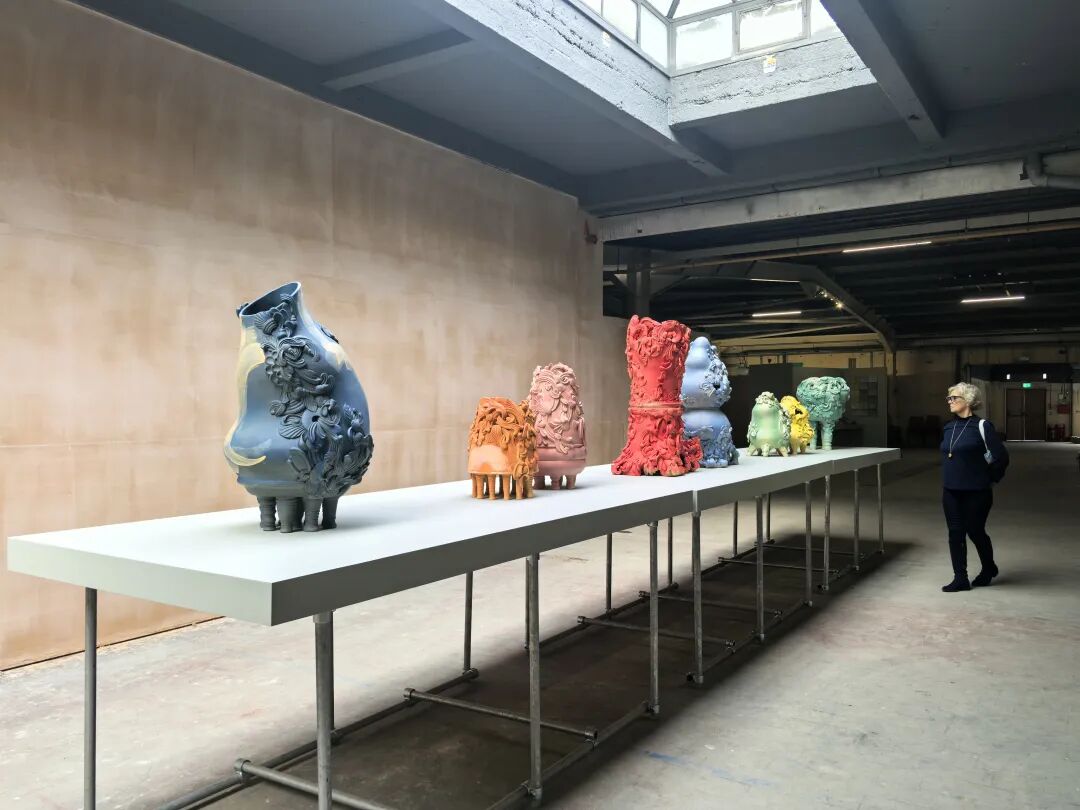
On-site view of the 2025 British Ceramics Biennial
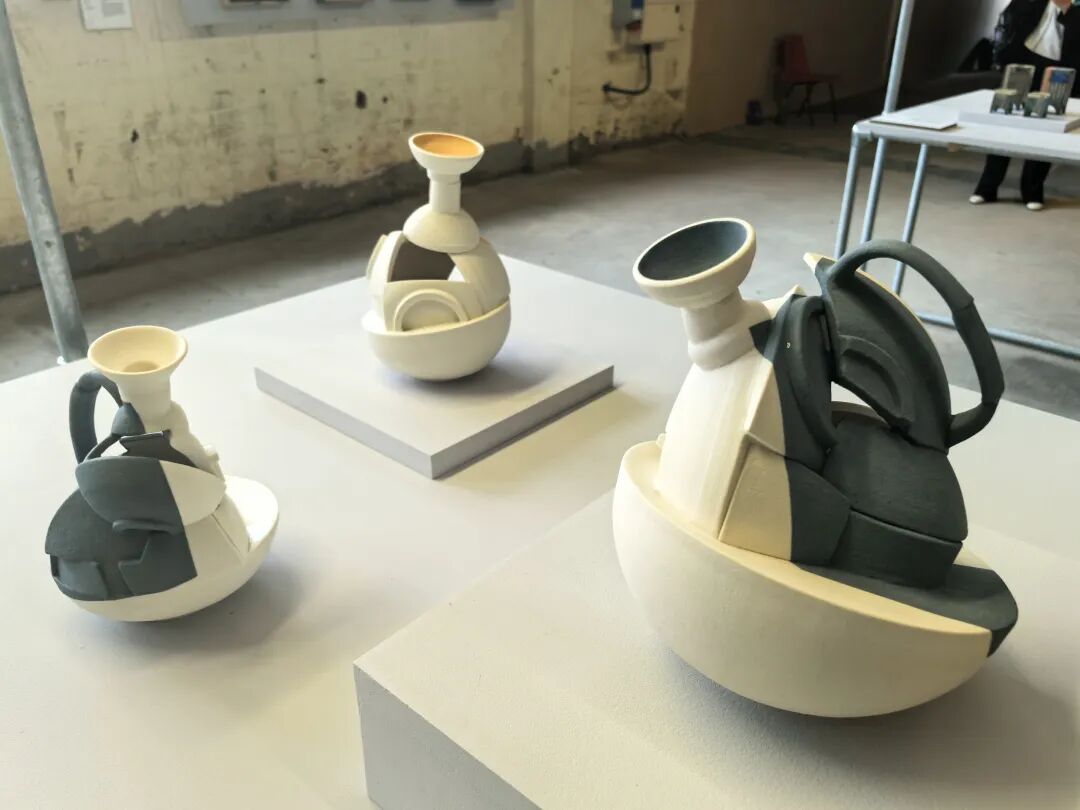
On-site view of the 2025 British Ceramics Biennial
The series of research activities carried out in Stoke under the National Social Science Fund’s major project“Research on the Internationalization Strategy of Chinese Ceramic Art”demonstrated both the integration of theory with innovation and the unique role of ceramics in East and West cultural exchange. From a theoretical perspective, Stoke ceramics, rooted in industrial heritage, offers a practical case study for combining traditional craft theories with contemporary artistic innovation. From the dimension of innovation, local workshops and artists have transcended material limitations, transforming ceramics from utilitarian vessels into diverse mediums of expression, thus exemplifying how traditional craftsmanship can be modernized and reinterpreted.
As a global hub for ceramic exchange, Stoke has long served as a bridge between Eastern and Western cultures. Through exhibitions and workshops, it not only showcases Britain’s industrial aesthetics and contemporary creativity but also draws inspiration from the philosophy and craftsmanship of Eastern ceramics. This field study deepened the research team’s understanding of the pathways to internationalizing Chinese ceramic art and offered fresh perspectives on fostering mutual learning between Eastern and Western ceramic cultures.
Knowledge Link:
The National Social Science Fund major project“Research on the Internationalization Strategy of Chinese Ceramic Art”approaches the subject from five dimensions: strategic vision, strategic foundations, strategic essence, strategic development, and strategic pathways. During the course of the project, Chief Expert Professor Lü Pinchang led the research team on field studies in Portugal, Sweden, South Korea, and Japan, and other countries, focusing on the opportunities and challenges, individuality and commonality, and theory and practice involved in the global communication of Chinese ceramic art. The project aims to propose effective strategies for its international dissemination, uncover the deep cultural value of Chinese ceramics, construct a global discourse system for Chinese ceramic art, and enhance its international influence. In this context, Professor Lü and his team’s fieldwork in Stoke revealed that the ceramic relationship between Jingdezhen and Stoke has never been a one-way process of technological imitation, but rather a dynamic, two-way interaction characterized by inheritance, innovation, and sharing.
Jingdezhen is celebrated as China’s“Porcelain Capital”, while Stoke holds the same distinction in Britain. Since the 16th century, Jingdezhen porcelain has been exported to the United Kingdom, where it was not only warmly embraced by the public but also inspired Stoke’s potters to emulate and innovate, refining production techniques in the process. This exchange profoundly shaped British dining culture, aesthetic tastes, manufacturing methods, and social life. Over the past four centuries, the two ceramic capitals have continuously engaged in dialogue, marked by exchange, competition, collision, and integration, a dynamic interaction that endures to this day.
The year 2025 marks the centenary of Stoke’s city charter, coinciding with Jingdezhen’s vigorous efforts to apply for UNESCO World Cultural Heritage status. In this context, more than ten faculty and students from Jingdezhen Ceramic University created works inspired by the willow-pattern ceramics that Stoke potters developed under the influence of exported Jingdezhen porcelain. Their works were showcased in Stoke through academic exhibitions, symposia, artist exchanges, and documentary filming, using history as a mirror while looking toward the future. These activities aim to strengthen Sino-British cultural exchange in ceramics, highlight Jingdezhen’s global significance, support its World Heritage application, and contribute to building the National Ceramic Culture Inheritance and Innovation Pilot Zone.
Looking ahead, cooperation could be further deepened—for instance, by establishing a“China-UK Digital Museum of Ceramic Heritage”in Jingdezhen, using VR technology to recreate the firing scenes of Middleport’s historic bottle kilns; and by founding a“Jingdezhen Ceramic Art Center”in Stoke, where Chinese and British ceramic artists could jointly hold exhibitions, making ceramic art a powerful medium for cross-civilizational dialogue.
The willow-pattern exchange exhibition project exemplifies true international communication. It not only supports the global outreach of Chinese ceramic art but also opens new avenues for cooperation. Themed bilateral exhibitions can help foster future collaboration in cultural exchange, artistic creation, talent cultivation, and cultural tourism and trade. As Professor Lü Pinchang of Jingdezhen Ceramic University, chief expert of the project, remarked:“Ceramics are the art of earth and fire, and more importantly, the messenger of civilizational exchange. The story of Jingdezhen and Stoke proves that when traditional craftsmanship embraces a global vision, and when historical heritage is infused with innovation, ceramic art transcends time and space to become a shared language of human destiny.”
The Stoke field study not only traced the millennium-long trajectory of Sino-British ceramic interactions but also outlined a blueprint for a future“Global Ceramic Community”, using ceramics as a medium to illuminate the brilliance of cultural integration across civilizations.
